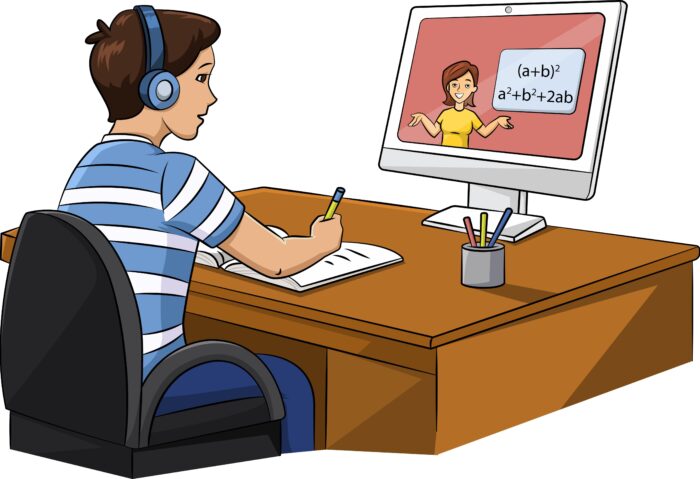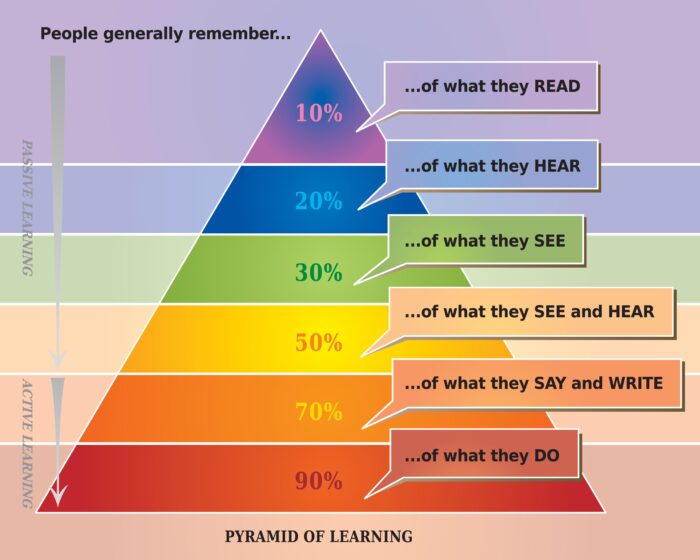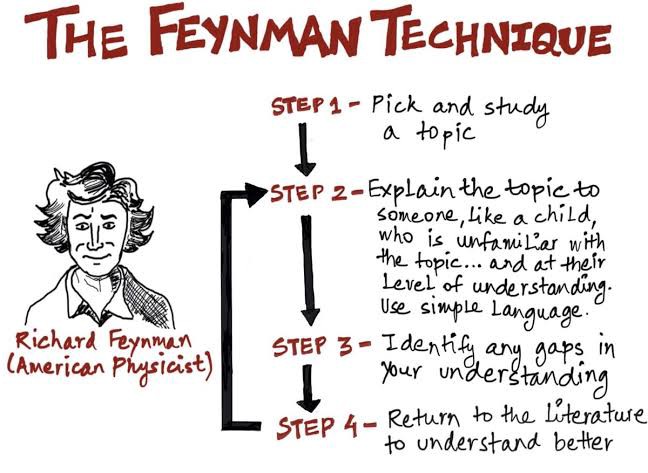Learn Any Topic Faster Using This Amazing Technique

The Feynman Technique is a method of learning that unleashes your potential and forces you to develop a deep understanding.
You can use this model to quickly learn new concepts, shore up knowledge gaps you have (known as targeted learning), recall ideas you don’t want to forget, or to study more efficiently. Taking that concept further, you can use this technique to grapple with tough subject matter, which is one of the great barriers to learning.
Richard Feynman was a Nobel prize-winning physicist. His real superpower, however, was his ability to explain complicated subjects to others in simple terms. He realized that jargon, vague words, and complexity reveal a lack of understanding.
Let’s explore how you can use this amazing learning technique and apply this in your studies.
Two Types of Knowledge
Feynman understood the difference between understanding something and knowing the name of something, and it’s one of the most important reasons for his success.
He was never content with just knowing the name of something. He wanted to understand it at a deeper level.
What is the Feynman Technique?

There’s a quote that’s often attributed to Albert Einstein which goes:
“If you can’t explain it simply, you don’t understand it well enough.”
Whether or not Einstein himself actually said this (it’s never been properly sourced, so it’s likely he didn’t), it’s still an insightful observation. It’s also one that gives us a pretty powerful study tip when reversed:
If you want to understand something well, try to explain it simply.
By attempting to explain a concept in simple terms, you’ll quickly see where you have a good understanding of that concept. You’ll also be able to instantly pinpoint your problem areas because they’ll be the areas where you either get stuck or where you end up resorting to using complex language and terminology.
This is the idea behind the Feynman Technique.
Feynman Technique is a simple learning method and a 4-step process for understanding any topic or concept quickly and effectively. Some people call it a method for how to learn anything fast, and it really is one of the best learning techniques out there.
The steps in the Feynman learning technique can be summarized as follows:
- Identify the Topic
- Teach It to a Child
- Review Your Explanation
- Simplify & Refine
That’s the gist of Feynman’s technique, often summarized as “teaching is the best way to learn”.
Why use the Feynman Technique while studying?

Learning doesn’t happen from skimming through a book or remembering enough to pass a test. Information is learned when you can explain it and use it in a wide variety of situations. The Feynman Technique is so amazing because as you explain a lesson, you get more and more ideas about the concept you learned. What you have learned doesn’t just become a useless fact; it’s now an idea in your head that from time to time you would use the learning in the real world to solve a problem you’d encounter.
When you really learn something, you give yourself a tool to use for the rest of your life. The more you know, the fewer surprises you will encounter, because most new things will connect to something you already understand.
Ultimately, the point of learning is to understand the world and apply the knowledge that we have to solve real-world, everyday problems. And that’s what the Feynman Technique teaches us to do.
How to Use the Feynman Technique

Since the root of this technique involves explaining the concept, you could execute it in a number of ways – including literally grabbing a friend and explaining to them what you’re learning. However, you don’t always have willing friends at hand, so here’s the simpler method that just involves a sheet of paper.
- Step 1: Grab a sheet of paper and write the name of the concept at the top. You can use pretty much any concept or idea – even though the technique is named after Feynman, it’s not limited solely to math and science.
- Step 2: Explain the concept in your own words as if you were teaching it to someone else. Focus on using plain, simple language. Don’t limit your explanation to a simple definition or a broad overview; challenge yourself to work through an example or two as well to ensure you can put the concept into action.
- Step 3: Review your explanation and identify the areas where you didn’t know something or where you feel your explanation is shaky. Once you’ve pinpointed them, go back to the source material, your notes, or any examples you can find in order to shore up your understanding.
- Step 4: If there are any areas in your explanation where you’ve used lots of technical terms or complex language, challenge yourself to re-write these sections in simpler terms. Make sure your explanation could be understood by someone without the knowledge base you believe you already have.
That’s it folks! It’s that simple!
One final tip: Think like a child

While you’re working through the Feynman Technique for any given concept, it can be useful to think like a child.
Doing this will boost your own understanding for one simple reason; in addition asking things like, “Can I have another Oreo?” and “Can I go watch cartoons now?” a kid is probably going ask…
“Why?” “How?” “What?”
While older people often become accustomed to taking things at face value, kids are naturally curious. They’re quick to point out their confusion.
So now you have to think like a child and try to come up with an explanation for each of these questions. Seriously, though, this is a great mindset to adopt.
Is the Feynman Technique the Best Way to Learn?

The Feynman Technique is considered to be a simple learning method for understanding things quickly and easily.
One of the main benefits of the Feynman learning process is that it denies memorization from playing a large role if you do it right. While memorizing material is a requirement for learning anything, it doesn’t itself imply understanding. Using analogies and simple language to explain your chosen topic to a child, however, goes much further in proving your topic knowledge.
Finally, the easiest way to learn something new is to have an interest and to explore it deeply.